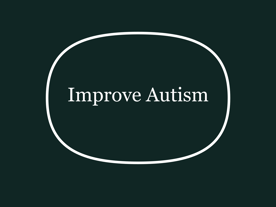Beneficial Effects of Repeated Washed Microbiota Transplantation in Children With Autism
Authors:
Pan, Z.Y., Zhong, H.J., Huang, D.N., Wu, L.H. and He, X.X.
https://pubmed.ncbi.nlm.nih.gov/35783298/
doi: 10.3389/fped.2022.928785
Summary of study
The study demonstrated that repeated WMT significantly improved a range of symptoms in 42 children with ASD. Initial improvements in ASD symptoms, sleep disorders, GI symptoms, and systemic inflammation were observed within one month after each six-day WMT course. Additional courses enhanced these benefits, with the most substantial improvements seen after three courses, approximately 3.5 months from the start of treatment. These findings highlight WMT as a promising intervention for managing multiple facets of ASD in children.
Findings
The study investigated the effects of repeated WMT on children with ASD, focusing on multiple symptom domains and systemic inflammation markers. The key findings are:
Improvement Across Multiple Domains: WMT led to significant improvements in ASD symptoms, sleep disorders, gastrointestinal (GI) symptoms, and systemic inflammation.
Cumulative Effect of Additional Courses: More WMT courses resulted in greater improvements, particularly in ASD symptoms and sleep disorders, with the most notable benefits observed after three or more courses.
Safety and Efficacy: WMT was presented as a safer alternative to traditional fecal microbiota transplantation (FMT), reducing adverse events through an automated washing process, and effectively alleviating symptoms in the studied population.
Duration of Interventions for Symptom Improvement
The WMT intervention involved multiple courses, each consisting of six consecutive days of fecal suspension injections via a transendoscopic enteral tube. The interval between each course was one month, and assessments were conducted approximately one month after each course. Here's how the timing relates to symptom improvement:
Initial Improvement: Symptoms began to improve within one month after the first WMT course, as assessments conducted approximately 30 days post-treatment showed significant reductions in symptom scores compared to baseline.
Progressive Improvement: Further improvements were observed with additional courses. For instance, after the second course (starting one month after the first and assessed one month later, around day 70 from the study start), symptom scores continued to decrease.
Optimal Improvement: The most significant improvements were noted after three courses, which, from the start of the first course to the assessment after the third, spanned approximately 3.5 months (around 105 days). This timeline includes:
First course: Days 0–5 (6 days).
One-month interval: Days 6–35.
Second course: Days 36–41 (6 days).
One-month interval: Days 42–71.
Third course: Days 72–77 (6 days).
Assessment: Around day 105 (one month after the third course).
Thus, while initial improvements were evident within one month after the first course, the full intervention period for the most pronounced effects (after three courses) took about 3.5 months.
Types of Symptoms Improved
WMT positively affected several symptom categories in children with ASD. Below are the specific types of symptoms that improved, along with the tools used to measure them:
ASD Symptoms:
Measurement Tools:
Aberrant Behavior Checklist (ABC): Assesses stereotypy, irritability, lethargy, inappropriate speech, and hyperactivity.
Childhood Autism Rating Scale (CARS): Evaluates ASD severity.
Findings: Both ABC and CARS scores decreased significantly after WMT, indicating reduced ASD symptom severity. The decrease was more pronounced with additional courses, with significant improvements noted up to three courses.
Sleep Disorders:
Measurement Tool: Sleep Disturbance Scale for Children (SDSC).
Findings: SDSC scores decreased after WMT, reflecting improved sleep quality. The improvement was significant initially, though the difference became less pronounced after the second course. However, overall, WMT was concluded to reduce sleep disorders, supported by discussion points linking microbiota diversity and inflammation reduction to better sleep.
Gastrointestinal (GI) Symptoms:
Measurement Tools:
Bristol Stool Form Scale (BSFS): Assesses stool consistency (normal range: 3–5).
Rome III Criteria: Defines constipation.
Findings: The proportion of children with constipation decreased (from 50% at baseline to 0% after four courses), and the proportion with normal fecal form increased (from 51.35% to 100% in some groups after three courses), indicating improved GI function with additional WMT courses.
Systemic Inflammation:
Measurement Indicators: White blood cell (WBC) counts and globulin levels.
Findings: Both WBC and globulin levels decreased after WMT, suggesting reduced systemic inflammation. Notably, WBC counts were positively correlated with CARS scores, reinforcing the link between inflammation and ASD severity, which WMT mitigated.


